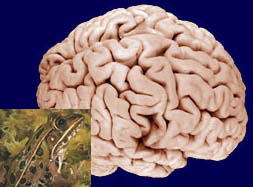

This page reflects links to the programs that have influenced the inquiry based, student-centered activities in my classroom.
This is the Serendip Home Page
This site , created by a group of faculty members at Bryn Mawr College, is a terrific source of information for educators.
This site gives valuable information on the different learning styles.
Nora A. Kasper
I have been teaching science for fifteen years. The
last twelve years have been in the largest all male private high school
in Philadelphia, Pa. We have a student body of about 1400 and a strong
tradition of academic and athletic excellence. Father Judge High School
presents many challenges and opportunities for me.
I began my teaching career as a social studies teacher.
Obtaining my science certification was a challenge for me. I have seen
a change in my students over the last five years. For the most part, I
teach non eager learners. These students are accustomed to
using technology but have a short attention
span. I have developed an inquiry based, student-centered, environmental
science program which includes field-based activities.
I am a GLOBE(Global Learning and Observations to Benefit
the Environment) teacher (http://www.globe.gov)
and I incorporate as much technology as I can into the curriculum.
We have an ongoing working partnership with the Fairmount Park Commission.
This partnership has enabled us to work on soil erosion prevention projects,
stream bank restoration and other projects, in our community.
My classroom is a hub of activity and my students comment
that class time goes by very quickly. I am learning along with my
students and I can see, for the first time, a raising of consciousness
for environmental concerns and issues.
Gis (Geographic Information System) is a software program that I plan on using in my environmental science classes.
The site below is very helpful and useful. This site also has activities that are
interactive and which can be adapted to each teacher's individual needs.
Thanks to the Bryn Mawr Institutes, which encouraged and empowered me as an educator, I was awarded a Woodrow Wilson National Fellowship. My research project was using GIS (Geographic Information System) in explaining global environmental changes.
The Woodrow Wilson site, below, has many projects in biology and environmental science for all grade levels.
The following is an example of the alternative assessment on energy that I use in my environmental science classes. It is a prompt assessment which receives positive feedback from students and parents.
Philadelphia Archdiocesan Curriculum Committee
Science Educator - GLOBE Teacher

Email Mrs.Kasper
nkasper@fjquest.com
http://www.fjquest.com/
b
The
Woodrow Wilson National Fellowship Foundation
CN 5281, Princeton NJ 08543-5281 - Tel:(609)452-7007
- Fax:(609)452-0066
Technical contact: lpt@woodrow.orgEnergy Assessment Timeline
Part I
March 6, 2000
Introduction and Explanation
Part II
Due March 13, 2000
TMI and Chernobyl questionnaire (please follow directions on sheet)
Part III